
Rocky Mountain coal mine in Alberta takes next step to expansion
In Alberta, a massive open-pit coal mine near Jasper National Park is hoping to expand...
A groundbreaking co-management decision by four First Nations and Fisheries and Oceans Canada will protect 17 crab harvesting sites on B.C.’s central coast for Indigenous food, social and ceremonial purposes starting April 1.
After 14 years of collecting data and aligning Indigenous knowledge and fisheries science, the federal department and the Kitasoo/Xai’xais, Heiltsuk, Nuxalk and Wuikinuxv nations decided to close the commercial and recreational fisheries in those areas indefinitely. The decision was the first made as part of a collaborative governance framework that will guide future management decisions for several species in the region over the coming years.
“There’s a lot riding on this type of decision-making,” Danielle Shaw, chief councillor of the Wuikinuxv Nation, said in an interview. “If we can build a foundation from a more collaborative way of management, then it can really be a turning point for management of a lot of species across the country.”
Steven Groves, a senior executive with Fisheries and Oceans Canada, told The Narwhal the closures are indicative of the new way the government is working with Indigenous communities. He said decisions were previously made on a more reactionary basis.
“What’s unique about this [decision] is how it came together, through a process formalized with the First Nations — it wasn’t about the outcome,” he said in an interview, adding that the department has collaborative relationships with other nations.
While the process paves the way for more collaborative fisheries management, the outcome is welcomed by the four nations, which have been unable to harvest enough crabs for their communities for over a decade.
Catching Dungeness crabs — a delicacy by most people’s standards — is easy. The scuttling bottom feeders are partial to the likes of raw chicken, fish guts and cat food. Drop a few baited traps in a choice location, wait a few hours and you’ll likely pull in a hefty catch. On a species level, Dungeness crab populations in B.C. are healthy — abundant even.
But for three or four months every year, transient recreational fishers flocked to the central coast and, together with a handful of commercial operators, harvested so many crabs that for the rest of the year, local Indigenous communities were left with the dregs — depleted populations and crabs under the legal size limit for harvesting.
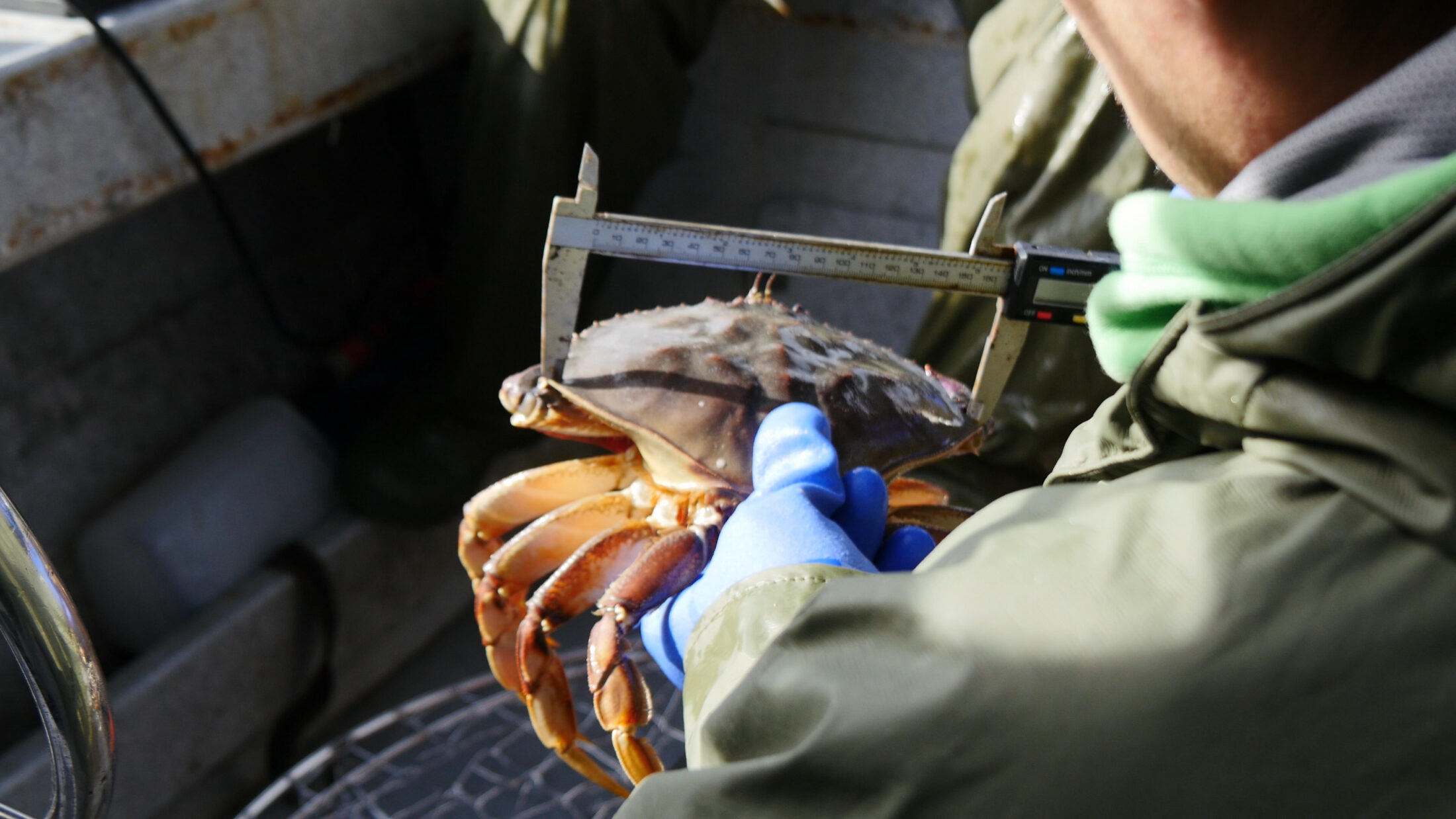
A Nuxalk guardian watchman measures a Dungeness crab as part of a monitoring survey. In the past, the majority of the harvestable crabs in the waters off B.C.’s central coast would be snagged by commercial and recreational fishers, leaving little for local Indigenous communities. Photo: Tristan Blaine
“Those other nine months, there was nothing left to harvest,” Mike Reid, aquatics manager with the Heiltsuk Nation, said in an interview.
Reid said it got so bad that Heiltsuk harvesters, himself included, stopped collecting crabs. After nine months, the populations would recover and the whole process would start over again.
In Wuikinuxv territory, it was a similar story.
Shaw said community members couldn’t even feed their families from a crab harvesting site right across the harbour from the village in Rivers Inlet. She said it still hasn’t fully sunk in that this decision has been formalized.
“This is something that we’ve been working on for so long, that it still doesn’t feel real to me that we’ve reached this huge milestone.”
In 2017, a decade after the Indigenous communities first flagged the problem to Fisheries and Oceans Canada, the department agreed to set up a pilot program to make decisions about crab fisheries with the nations as part of its commitment to a fisheries reconciliation agreement. The agreement facilitates collaborative governance and decision-making between nations and the federal government.
The pilot program was structured to ensure equal contributions from each of the nations and Fisheries and Oceans Canada. A technical working group of fisheries managers from the nations and Fisheries and Oceans Canada compiled data and made recommendations to a steering committee made up of senior management from the federal department and each of the nations. A final decision was jointly made by chief councillors and government executives. Every decision or recommendation made by each level of the collaborative group had to have consensus before it proceeded. This framework will be applied to co-management decisions about other species in the coming years.
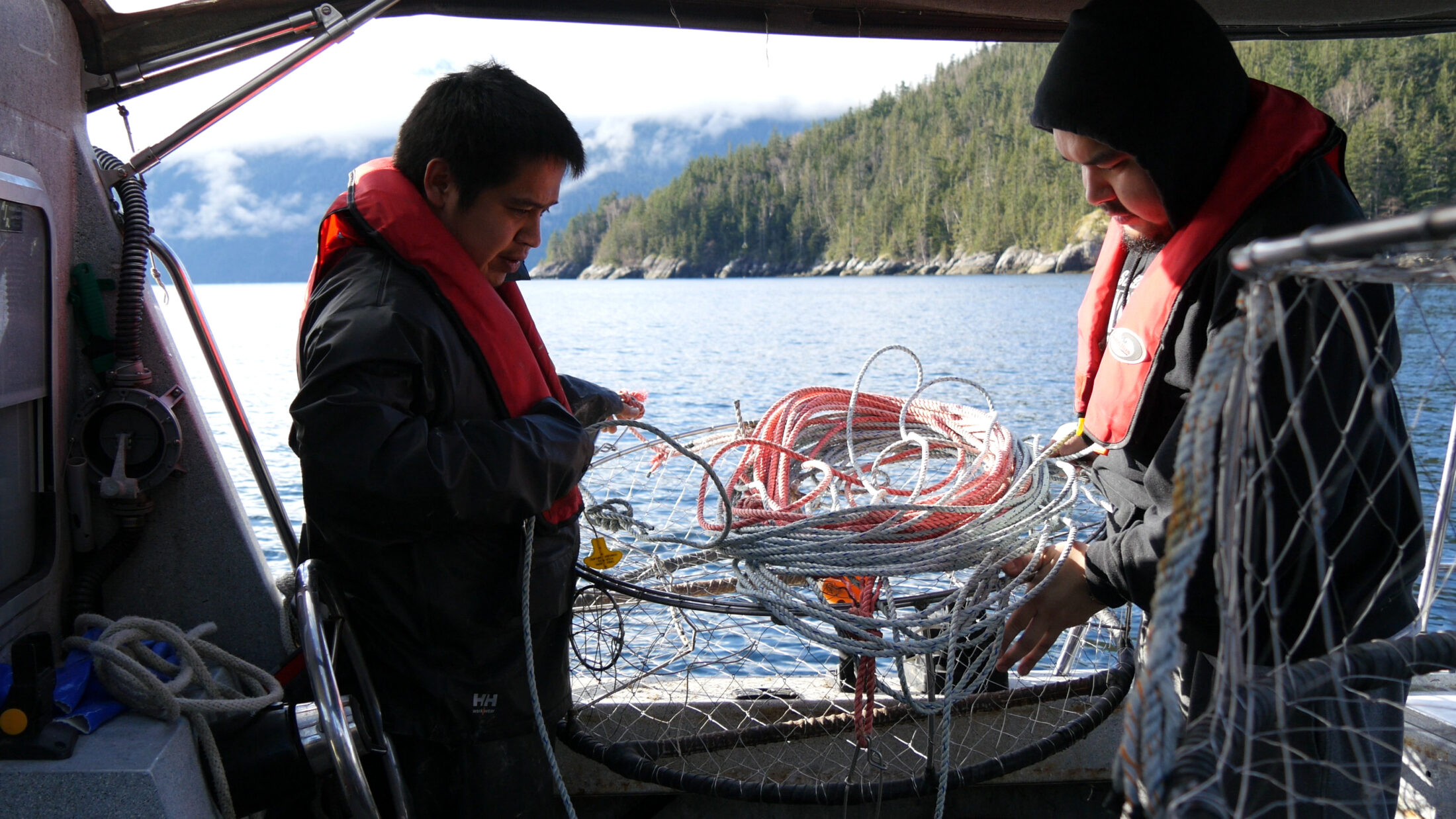
Nuxalk guardian watchmen Charles Saunders and John Sampson prepare a crab trap for surveys near Bella Coola, B.C. Indigenous-led science led to recommendations to close the crab fisheries in 17 locations on the central coast. Photo: Tristan Blaine
Groves said a notable part of the process is that the recommendations to close the crab fisheries were made based on Indigenous-led science.
Shaw said the nations worked hard to figure out which locations should be off-limits to recreational and commercial fisheries. The goal was to identify areas that can’t sustain commercial and recreational fisheries while also meeting food, social and ceremonial needs.
It wasn’t easy to get to this point.
In 2007, First Nations sounded the alarm about declining crab populations on the central coast and started pressuring Fisheries and Oceans Canada to take action. But it wasn’t enough to tell the department what Indigenous fishers were observing — they had to prove it, according to Reid. He said Fisheries and Oceans Canada told the Indigenous communities to provide hard evidence to back up their claims and showed them how to collect the data. The
Central Coast Indigenous Resource Alliance, a partnership between the four nations, started working with researchers to survey the territories in earnest.
The four nations closed 10 crab fishing sites under Indigenous law and monitored an additional 10 open sites for comparison. The results were clear: crabs at the closed sites were bigger and there were more of them, whereas populations at sites open to commercial and recreational harvesting were severely depleted. The study was published in the journal Global Ecology and Conservation and presented to the department in the hopes it would prompt action.
But even that was not enough. The nations needed to show Fisheries and Oceans Canada that the declines were directly impacting the harvest of crabs for food, social and ceremonial purposes.
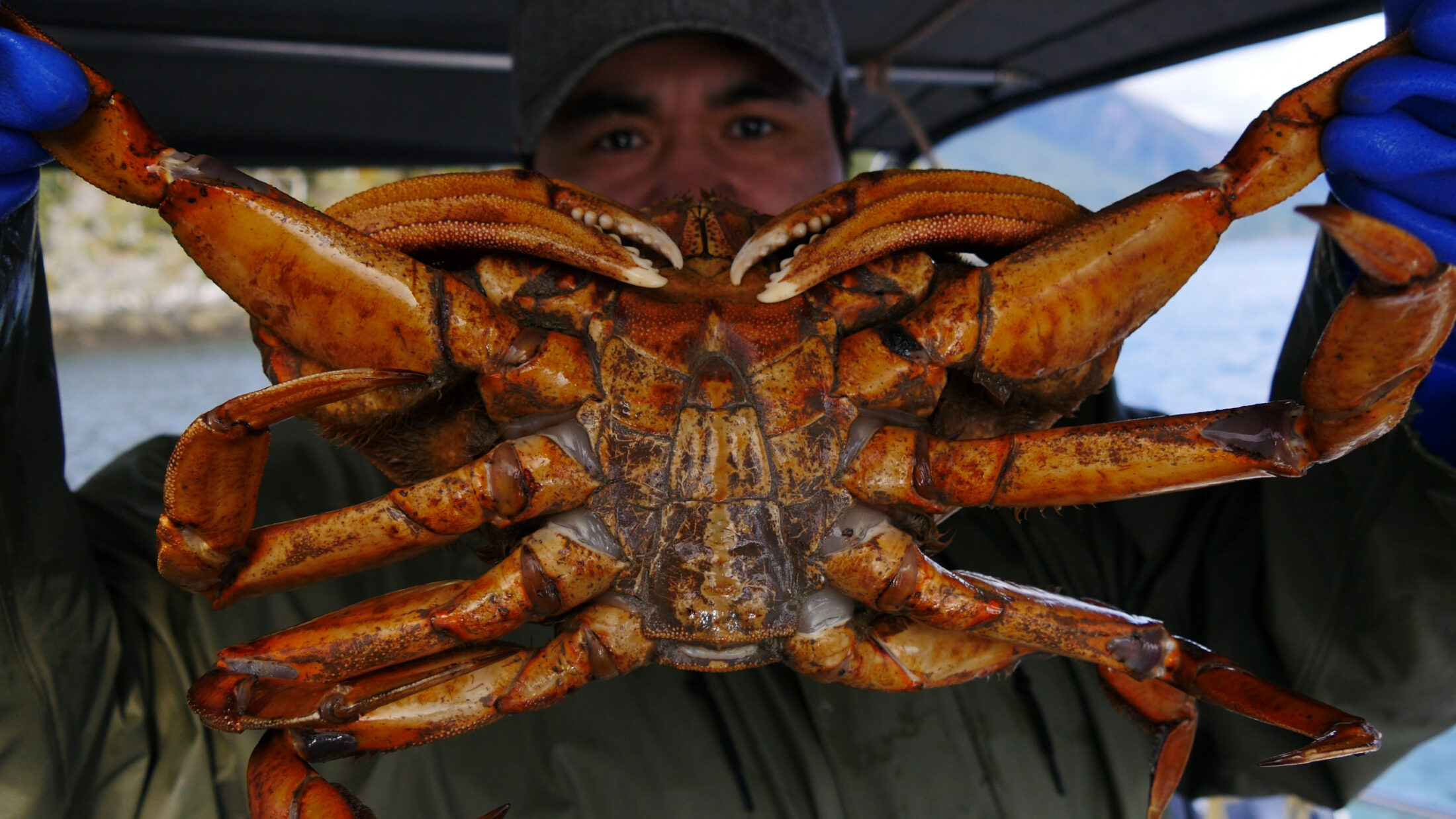
Keith Windsor, a Nuxalk guardian watchman, holds a Dungeness crab caught as part of a monitoring survey on the central coast of B.C. Monitoring the moulting of massive crabs like this tells Windsor how productive an area is and how much fishing pressure the area experiences. Photo: Tristan Blaine
To acquire data on historical abundance, members of the communities, including Elders with a lifetime of experience on the ocean, collaborated with conservation scientists on a series of interviews. Natalie Ban, an associate professor of environmental studies at the University of Victoria, was the lead author of the resulting report. She emphasized that while her name is on the study, the work was led by the nations themselves.
“It’s unfortunate that this was needed because I [was] just repackaging their stories, yet that somehow has more credibility with policymakers and the likes of DFO than hearing stories from First Nations,” Ban said in an interview.
Of the 38 people Ban and her colleague, Lauren Eckert, interviewed, more than 80 per cent said they observed a severe decline in abundance at crab harvesting sites in their respective territories.
“At the scale of the Dungeness crab fishery, it’s probably not much of a concern, but at the scale of each of the individual nations, it’s a huge concern,” Ban said.
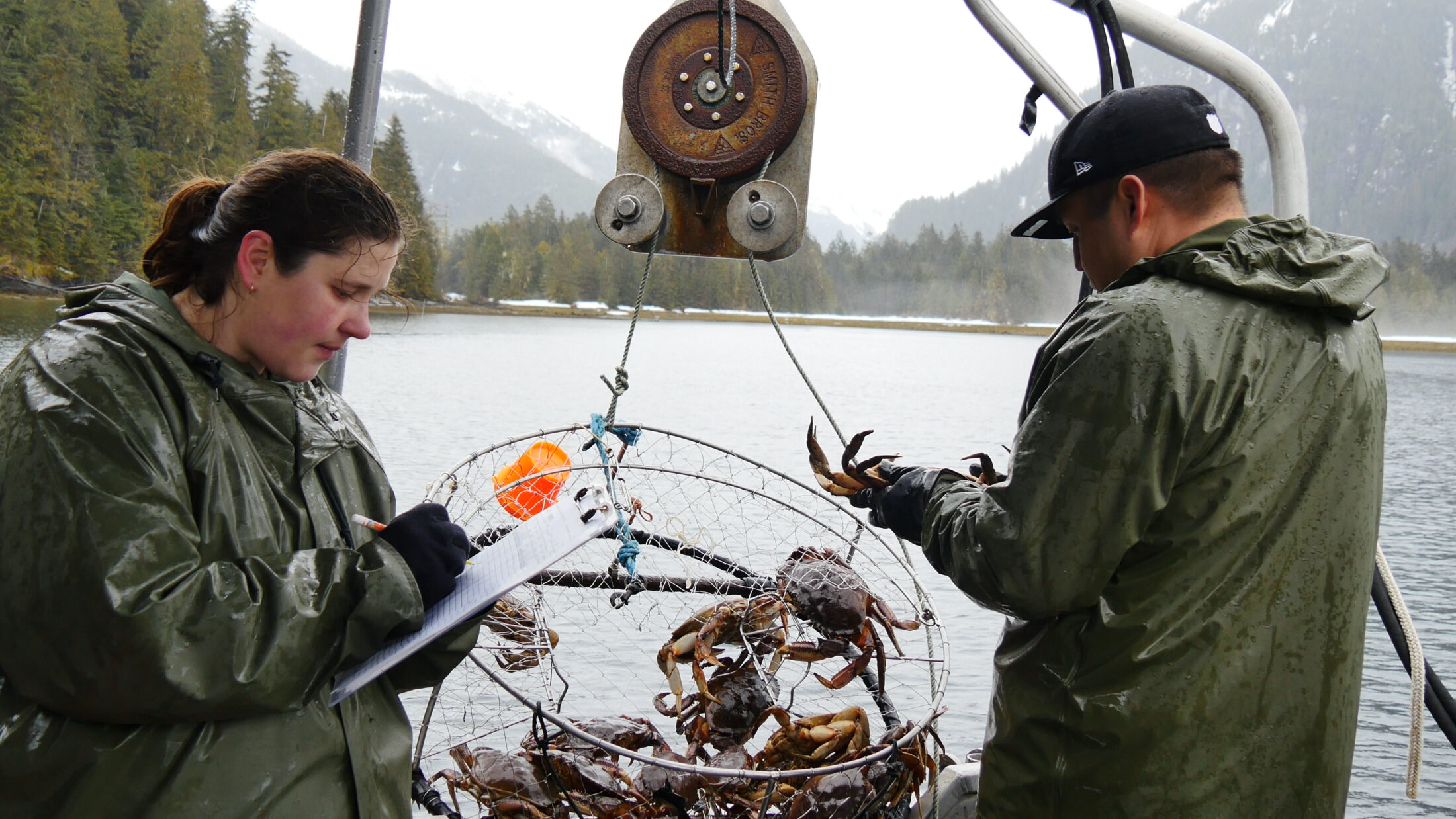
Sandie Hankewich, left, and Ernie Mason have been surveying Dungeness crab in Kitasoo/Xai’xais territory for more than a decade. These surveys paired with Indigenous Knowledge of the territory give each central coast nation the data needed to make important management decisions. Photo: Tristan Blaine
The researchers then tried to determine how many crabs each nation needed for food, social and ceremonial purposes, which Ban said made her uncomfortable. She explained that the academic and policy approach to putting numbers on need can set a dangerous precedent.
“It’s a tricky thing to have to do, and potentially fraught with all sorts of issues, because it’s setting the lowest of the low bars of people being able to meet their need for food and maybe some potlatches or some trading, but that’s not what we should be striving for.”
The estimated need was around 160,000 crabs per year between the four communities, plus more for feasts and ceremonies — a far cry from what the nations were able to catch.
As this data was being gathered, the communities were still unable to access crabs in their own territories. Shaw said the four nations were almost ready to give up on the process in 2016, frustrated by what she said was Fisheries and Oceans Canada’s lack of decisive action despite years of data collection and discussions.
“We were kind of at a point where we were like, we’re just not even going to engage any further if we can’t do so in a more productive way,” she said.
Then she and other Indigenous representatives had a meeting with the fisheries department in Vancouver. Douglas Neasloss, stewardship director for the Kitasoo/Xai’xais Nation, was on the phone from Klemtu. Neasloss had stayed in his community to monitor the activity of a commercial crab fisherman operating in an area closed under Indigenous law.
Neasloss told the department if it didn’t act immediately, Kitasoo/Xai’xais guardians were going to evict the commercial fisher from the territory and, if necessary, pull all of his crab traps.
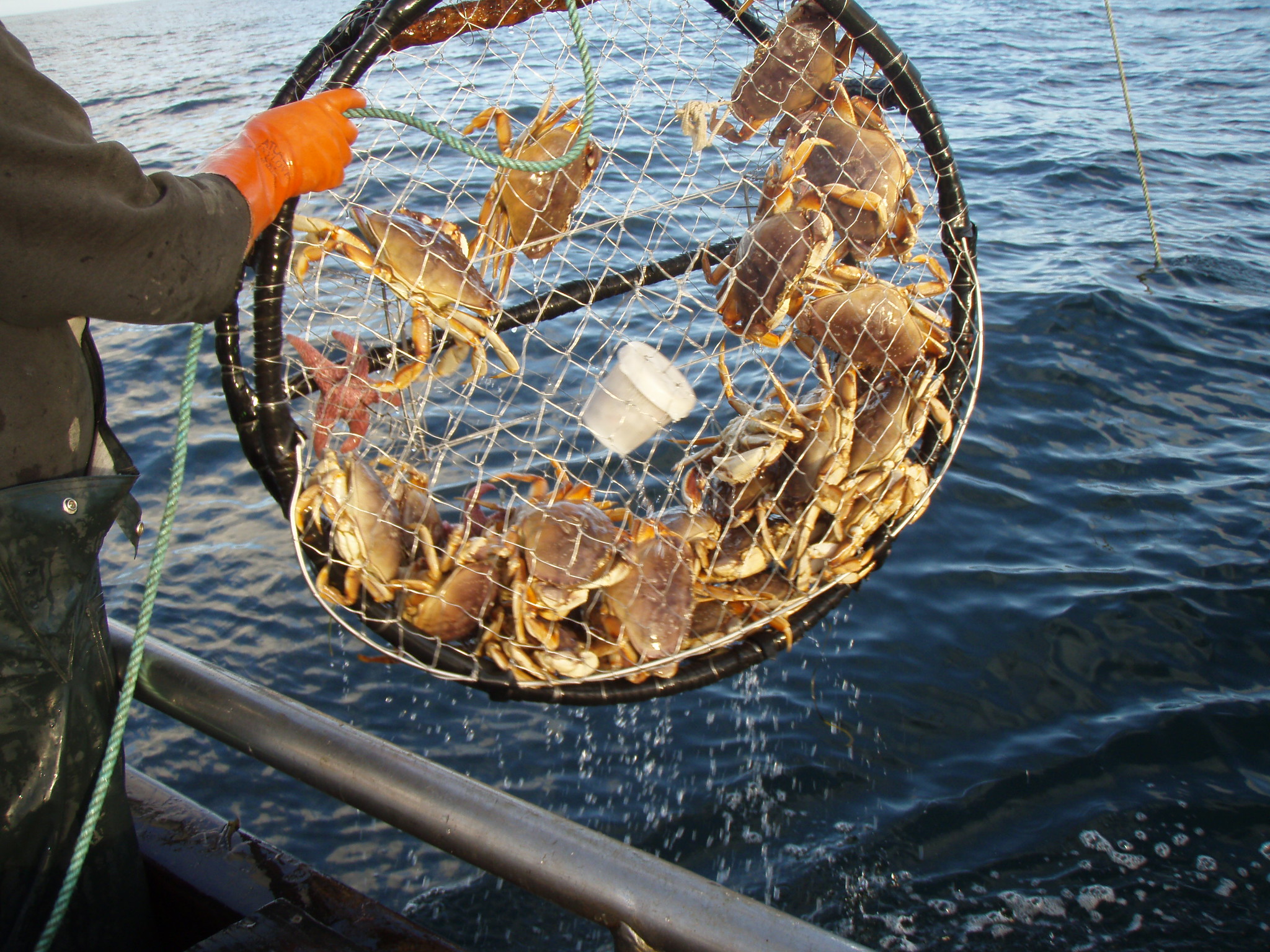
During a tense meeting between Fisheries and Oceans Canada and four B.C. central coast First Nations, Douglas Neasloss, stewardship director for the Kitasoo/Xai’xais Nation, threatened to pull a commercial fisher’s crab traps if the fisheries department didn’t intervene. Photo: California Department of Fish and Wildlife / Flickr
“Then he hung up and the room was just quiet,” Shaw said. “Everyone kind of looked around like, ‘Whoa, OK, stuff is very real right now.’ ”
She and the other nations’ representatives at the table pulled out their phones and called to tell their respective guardian coordinators to get boats ready to head to Klemtu in solidarity.
In the end, Neasloss presented the commercial operator with a notice and the fisher voluntarily pulled his traps, so no further action was required — but Shaw said it made the department realize it had to change the way it worked with First Nations and was a catalyst for setting up the pilot project.
“It was a real turning point for DFO … to see how things were functioning at a nation management level, and to see that we’re not messing around anymore,” Shaw said.
The fisheries department was unable to comment on these events prior to publication.
Fisheries and Oceans Canada has already informed commercial harvesters of the new closures, but monitoring recreational fishers will be more challenging. Shaw said Wuikinuxv guardians will be on the water to make sure no one is dropping traps in closed areas.
The other nations also have guardian programs to monitor activity on the water and the fisheries department said it will be working closely with its sport fishing advisory board to get the message out. Additionally, recreational fishers can download the Fishing BC app, which provides up-to-date information about regulations, including closures.

Members of the Coastal Guardian Watchmen inspect their crab traps near Bella Bella, B.C. The watchmen patrol Heiltsuk territory regularly and will ensure no recreational or commercial crab harvesting is taking place in off-limits areas. Photo: Louise Whitehouse / The Narwhal
As for future management decisions, Reid said plans are underway for a similarly structured group to discuss conservation priorities for wild salmon, many populations of which face extinction.
“It’s a little bit sad, I guess, that we’re jumping into that process when salmon have actually crashed,” he said.
Shaw agreed and sighed. “Salmon is going to be a bit of a different beast altogether, but it’s in desperate need so it’s the highest priority.”
Editor’s note: Lauren Eckert is a member of The Narwhal’s board of directors. As per The Narwhal’s editorial independence policy, our news judgments are made independently of our board of directors, who are not involved in day-to-day news operations.
Get the inside scoop on The Narwhal’s environment and climate reporting by signing up for our free newsletter. A $335 million funding commitment to fund...
Continue reading
In Alberta, a massive open-pit coal mine near Jasper National Park is hoping to expand...

A trade war could help remake B.C.’s food system, but will family farmers be left...

First Nations are leading efforts to make sure lake sturgeon can find a home in...
